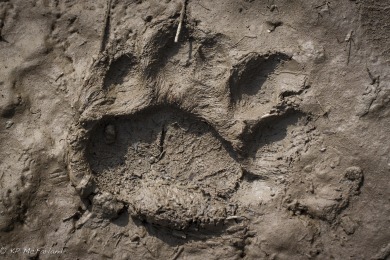A young black bear has been getting into bird feeders and garbage cans in southeastern Vermont and the Fish & Wildlife Department is asking for help from local residents. Members of the public who spot the bear in their yards are asked to contact the department. They are also urged to take action to discourage the bear from causing further problems.
The bear is a yearling male marked with a red tag in each ear bearing the number CT 024. It was found denning with its mother and a sibling under a porch in Connecticut this past January. The bears were relocated to another den site and were given distinctive ear tags as part of an ongoing wildlife research project in that state.
The bear has since wandered north into Vermont and has thus far been spotted in Brattleboro, Guilford, Dummerston and Marlboro. It appears to be habituated to people and has prompted multiple reports daily from residents who find it in their backyards or on their decks.
“We’re asking for people to bear-proof their yards to discourage this bear from developing additional bad habits while there is still time,” said Forrest Hammond, bear project leader for the Vermont Fish & Wildlife Department. “Put away your birdfeeders, secure your garbage, bring in pet food and take in anything else that might attract this or other bears. If you have chickens or bee hives, we recommend putting electric fencing around them to deter bears.”
When yearling male bears go off on their own, they are attracted to the easiest food sources they can find. “All too often, people unknowingly leave out an easy meal for these young bears, which quickly teaches them to return to residential properties for more,” said Hammond.
According to Hammond, this bear has not yet caused extensive property damage or shown aggression towards people. However, the bear may become bolder and its behavior may escalate towards more aggressive behavior. Such situations often end fatally for the bear.
In addition to removing potential bear attractants, residents can help give the bear a negative experience by scaring it with noise, such as banging pots and pans.
“At this stage we don’t know if we can influence the bear, but we think it’s worth a try before it becomes a real problem animal,” said state game warden Kelly Price, who has handled several calls related to this bear. “We need the public to pitch in and get the bear back on the right track.”
Hammond is also asking residents to contact the Fish & Wildlife Department immediately if they spot the bear so that they can track its movements. People who see this bear with red ear tags should contact Hammond by filing a Bear Incident Report on the department’s website atvtfishandwildlife.com. Simply click on the image of a bear holding a bear feeder to access the report. To report more serious bear damage, phone your local game warden directly.
Price reminds residents that, since 2013, it is illegal to feed a bear in Vermont. Members of the public who knowingly feed a bear, or who do not comply when asked to remove a food source that has attracted a bear such as a birdfeeder, face potential fines and penalties up to $1,000. Members of the public also may not legally shoot a problem bear without first taking non-lethal means to prevent further issues and should report any such bears to local game wardens.

